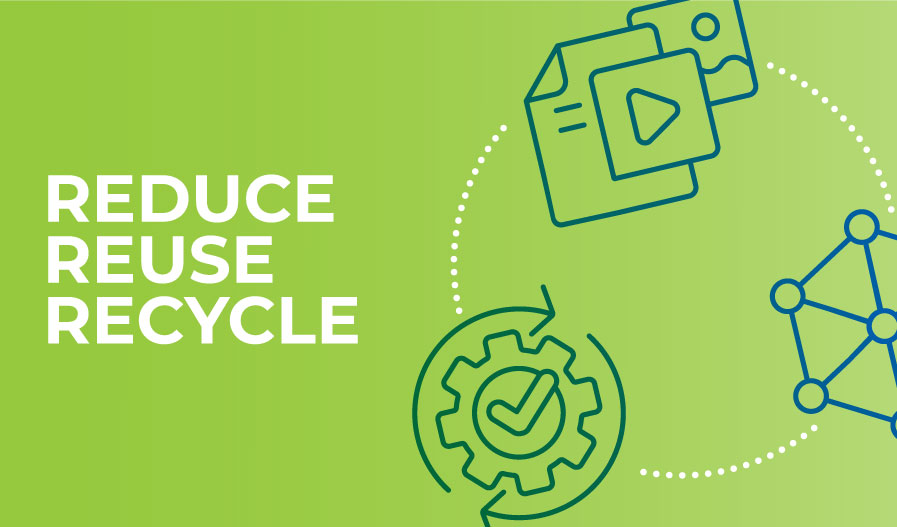
Extending your content’s shelf life can be helpful in multiple ways. Reducing, Reusing, and Recycling your content can prevent creative burnout on your team, provide content to post on different platforms, and keep your audience from being overwhelmed with new content. Constantly publishing new material is time consuming and can be challenging for your team to create. Using the 3 Rs of content marketing, you can stop reinventing the wheel and see higher ROI on your existing content.
Reduce: Cut down on your content length

Your long form content might have a better life in multiple blogs, social posts, or other deliverables. Readers often get discouraged by long-form content and will either not read it at all or leave halfway through. If you have already caught the attention of your target audience, then you want to keep them engaged in hopes of gaining a new lead.
Making content smaller and more digestible is a quick and easy fix. As mentioned above, utilizing long content to make multiple, smaller pieces is a great solution. This allows you to have shorter content while giving you more opportunities to publish as you continue to post the remaining content.
Reuse: Repurpose old content and give it new life

Assessing your content is an integral part of knowing what should be reused. The Content Marketing Institute suggests starting with assessing your site’s content by creating a “content inventory”. Making one is simple – create a spreadsheet with the following columns for each piece of content:
- URL
- Title
- Author
- Post date
- Updated date
- Category (if applicable)
- Total impressions
Once you know all of your content, run your site through a rank tracking software tool, like Google Search Console, and find your highest ranking pages. Then, you get to decide whether to reuse or recycle the content.
How can you reuse content? ReferralRock says that 31% of marketers prefer to reuse content in the form of a video. But this isn’t the only way, there are faster and easier ways such as putting it into a monthly E-newsletter, posting on social media, or even crafting it into a podcast. Points Group goes into more detail and suggests:
- Remake presentations into how-to videos
- Turn old blogs or news post into an infographic
- Use old content from marketing materials to fill out empty spots on your website
- Use snippets from company brochures to create social media posts
- Use videos as a basis to write supporting content in the form of a blog and post the content on the same page
Recycle: Republish old content with a new spin or update

Don’t miss the opportunity to recycle content that still performs well. A blog post from 2017 that still gets organic traffic is a great start. This LinkedIn article suggests updating blog content with new info and a relevant call to action, or redirecting that popular URL to a newer piece of content. Keep in mind that not all content should be recycled. Refer to your analytics and team’s bandwidth when deciding if past work is still relevant and worth the effort.
Content is created to increase traffic and conversions while also establishing you as a thought leader in your industry. Being able to recycle old pieces adds new life to your content and gives you the opportunity to showcase your work on more platforms. Web Marketing Pros points out that recreating older, popular content grabs and holds the attention of your audience.
There are a multitude of ways to repurpose content whether you are reducing a long blog into eye-catching socials, reusing a presentation as a video, or recycling an old blog post as a new, updated blog. Remember, it is not simply about copying and pasting. Your new content should remain useful and informative while being engaging and fresh. Need help figuring out what content to reduce, reuse, or recycle? Contact AAC for more information.

